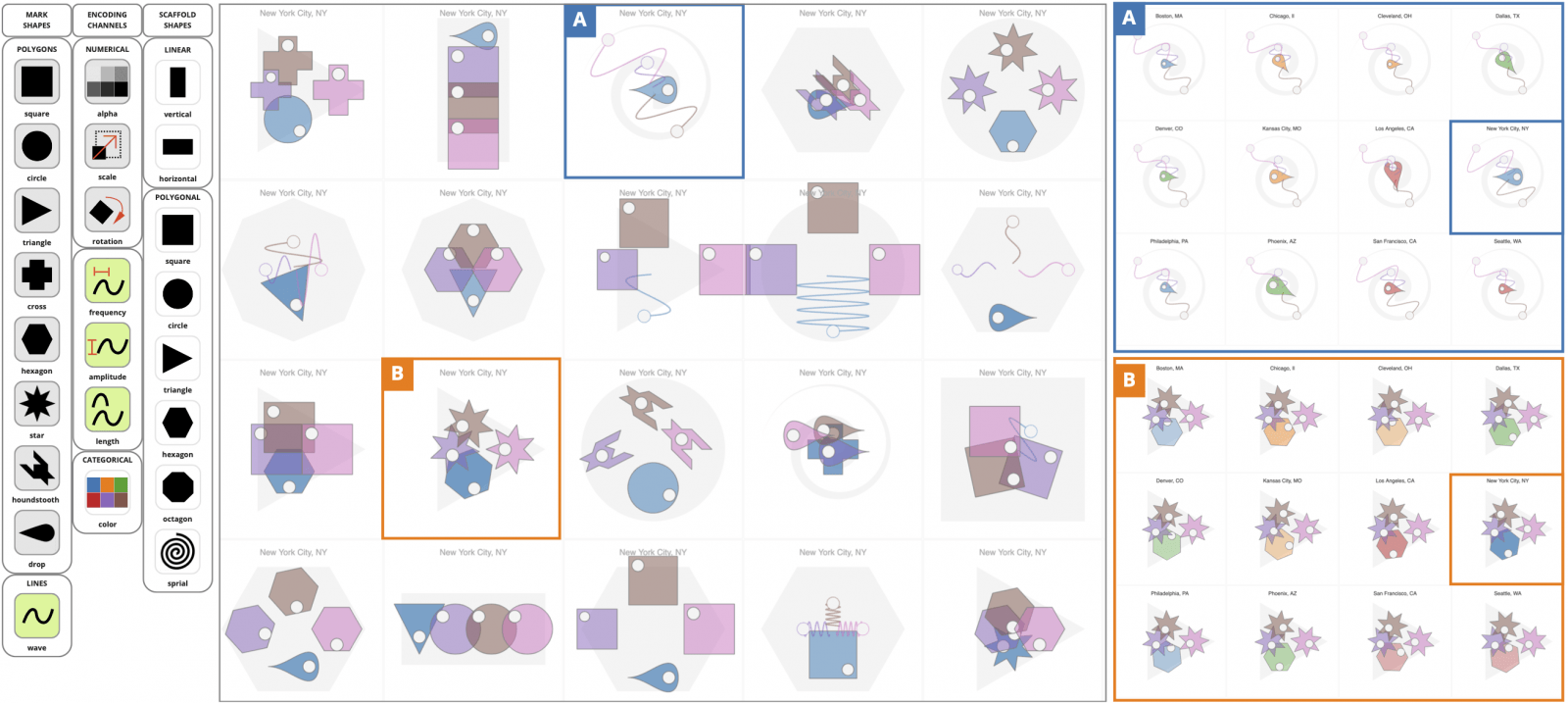Generative Design Inspiration for Glyphs with Diatoms
IEEE VIS 2021 / in IEEE Transactions on Visualization & Computer Graphics

We introduce Diatoms, a technique that generates design inspiration for glyphs by sampling from palettes of mark shapes, encoding channels, and glyph scaffold shapes. Diatoms allows for a degree of randomness while respecting constraints imposed by columns in a data table: their data types and domains as well as semantic associations between columns as specified by the designer. We pair this generative design process with two forms of interactive design externalization that enable comparison and critique of the design alternatives. First, we incorporate a familiar small multiples configuration in which every data point is drawn according to a single glyph design, coupled with the ability to page between alternative glyph designs. Second, we propose a small permutables design gallery, in which a single data point is drawn according to each alternative glyph design, coupled with the ability to page between data points. We demonstrate an implementation of our technique as an extension to Tableau featuring three example palettes, and to better understand how Diatoms could fit into existing design workflows, we conducted interviews and chauffeured demos with 12 designers. Finally, we reflect on our process and the designers’ reactions, discussing the potential of our technique in the context of visualization authoring systems. Ultimately, our approach to glyph design and comparison can kickstart and inspire visualization design, allowing for the serendipitous discovery of shape and channel combinations that would have otherwise been overlooked.
Watch the conference presentation at https://youtu.be/GKKuxvUrCf4 and the supplemental video at https://vimeo.com/576815038.
Read the open-access paper at https://doi.org/10.1109/TVCG.2021.3114792. A preprint version is also available on arxiv: https://arxiv.org/abs/2107.09015 (PDF)
Créateur(s) Tableau
Auteur(s)
Carmen Hull